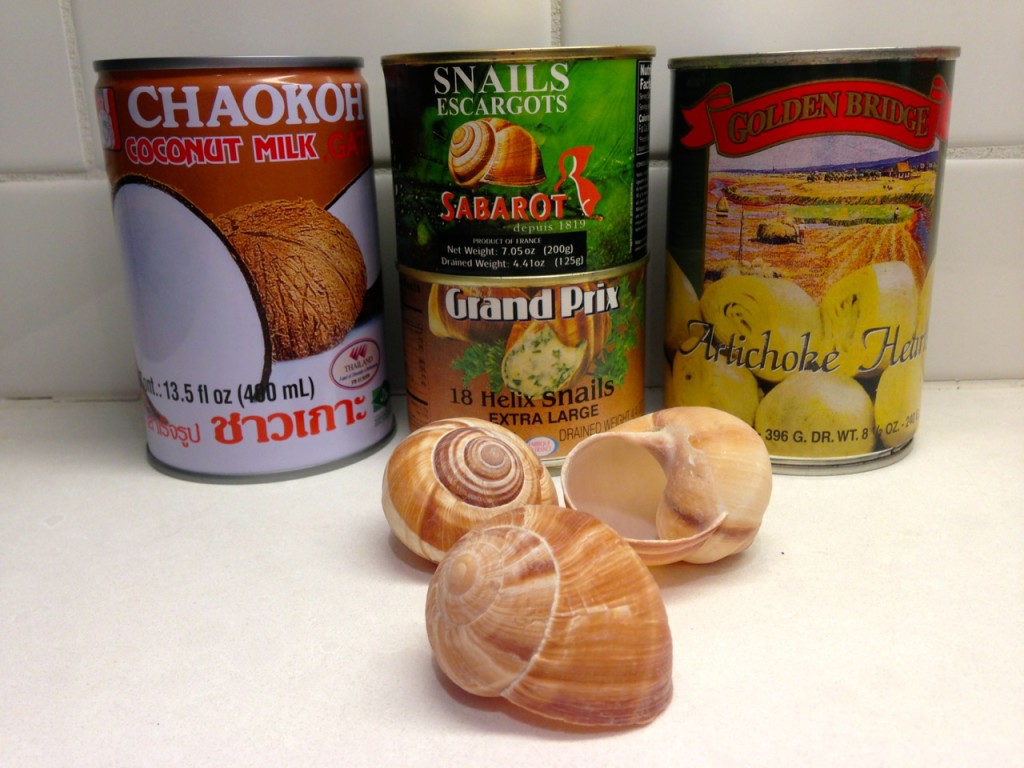 Do I dare donate these foods to the hungry?
Do I dare donate these foods to the hungry?
One lazy Saturday morning recently a Boy Scout rings the doorbell. He and his troop mates are canvassing the neighborhood collecting canned goods for a feed-the-homeless drive. He’s polite and well spoken, and I’m happy to open my kitchen cabinet for the cause. But as I turn from the door to get something to contribute, I realize I have nothing to offer.
Not that the cupboard is bare. On the contrary, our kitchen bulges with enough comestibles to see us through any catastrophe that might render food scarce. But the only canned goods I have are coconut milk, artichoke hearts and snails. In fact, I have multiple cans of each.
“This is ridiculous,” I grumble as I peer into the depths of my pantry. How many cans of snails does one household need?
“Does it have to be canned?” I yell toward the open door.
“No, ma’am, it just has to be nonperishable.”
That doesn’t help much as I poke in frustration at two tiny jars of salt-packed capers, a tin of anchovies and a regiment of home-canned relishes and preserves. And condiments from Armenian and Indian markets, the seals of which I have yet to break. And the bottles of Tabasco sauce I hoarded in the wake of Hurricane Katrina when I feared that McIlhenny’s would be either washed or blown away, an embarrassingly shallow disaster response to admit.
I rummage on, looking for a suitable contribution as my Boy Scout waits patiently on the front porch, softly crinkling the stack of Trader Joe’s grocery bags dangling from his wrist.
Why did he have to call me ma’am? I’d expect that back home in Tennessee, but here in Southern California, the Land of Youth-and-Image-Are-Everything, no one wants to be addressed as a ma’am or a sir outside the military. Suddenly I feel ancient, not to mention Odd-with-a-capital-O.
But this is my living as well as my eating. After enduring the boot camp that is culinary school, I’m more dedicated to exploring world cuisines than most, and the peculiarities of my cabinets and refrigerator reflect this.
Now I’m completely flummoxed by what to most households would be a simple request. The fact is, my pantry is filled with ingredients. Himself and I buy ready-to-eat canned goods for one reason only—to stock our emergency earthquake stash, an ample reserve of food in a huge plastic bin in the garage that I forget we have until long after my Boy Scout has moved on.
Glancing up at his silhouette in the security door, backlit by the morning sun, I note that his uniform is neatly pressed and that he wears it with obvious pride. I don’t remember Boy Scouts being quite so tall. I hope he isn’t just some college student with a clever way of augmenting his diet of ramen, beer and smokes.
I glimpse back into the cabinet and note at least two-dozen packages of assorted grains and dried beans. But how many homeless people are equipped to soak beans overnight and then cook them for a few hours? The nuts and dried fruits are all partially used, as is the honey. The molasses. The Nutella. I can’t give away used food. That would be as inexcusable as gifting someone the avocados from our backyard that have squirrel bites in them.
Finally I spot a can of haricot verts, green beans from France that I bought during a recent trip to an import wholesaler during one of its periodic open houses. There’s nothing complicated about preparing them, so who cares if the writing on the label is all in French? It’s obvious from the photo that there are green beans inside. It even has a pull-tab top, so it’s easy to open.
I snatch it from the pantry and rush to the door.
“Here you go!” I chirp a little too gleefully as I drop the lone can into the waiting grocery bag. It lands with a light crink of crisp brown paper.
“Thank you, ma’am,” he says and quickly glances away. Is he trying to hide his disappointment? No doubt he’s thinking that was a long time to wait for one measly can of beans.
I return to the kitchen feeling defeated and take another peek into the pantry. Still, no good candidates for the donation bag leap out at me. Then I consider one of those cans of snails. I bought it at the same import market where I got the green beans. As with the beans, all the writing on the label is in French. However, there are no pictures of the curlicued little garden dwellers in their natural state. Instead, the photo wisely shows the finished product on the plate, swimming in butter, garlic and parsley. Even without those classic ingredients the snails are cooked and ready to eat right out of the can. And they’re tasty little morsels of protein.
I rush out onto the porch and glance down the street. My Boy Scout is on his way up the drive a couple of houses down.
“Excuse me!” I call, waving the snails. “I found another can.”















